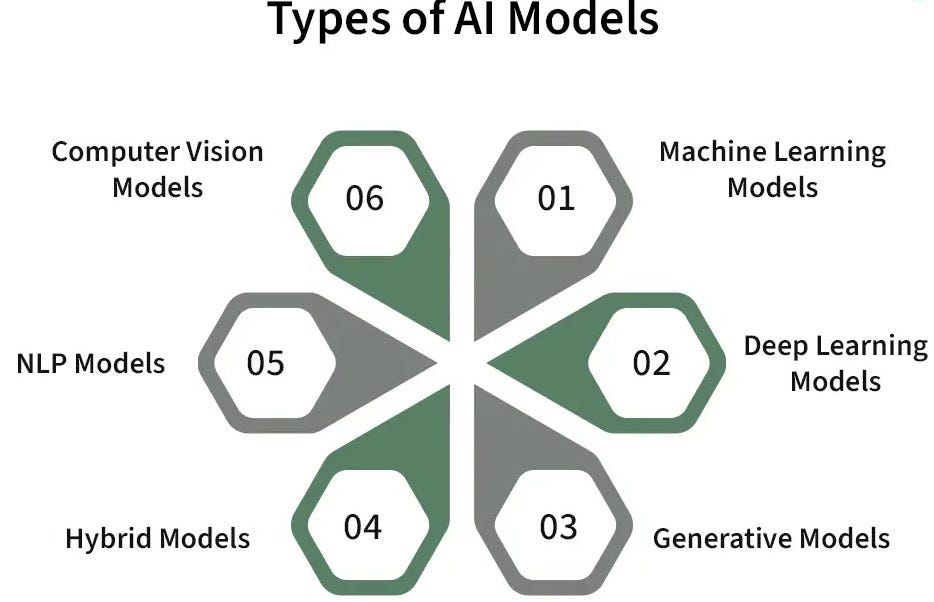🤖✨ Unlocking the Power of AI: Developing, Training, and Deploying Intelligent Models ✨🤖
🤖✨ Unlocking the Power of AI: Developing, Training, and Deploying Intelligent Models ✨🤖
Artificial Intelligence (AI) is no longer just a buzzword — it’s a transformative force reshaping industries, from healthcare to finance, and even creative arts. But how do you go from an idea to a fully functional AI model? In this blog, we’ll dive into the principles, techniques, and tips for developing and training AI models, and explore how they’re used in real-world applications. Let’s get started! 🚀

🧠 The Principles of AI Model Development
Before jumping into coding, it’s essential to understand the core principles of AI model development:
- Problem Definition: Clearly define the problem you want to solve. Is it image recognition, natural language processing, or predictive analytics? 🎯
- Data is King: AI models rely on data. The quality, quantity, and diversity of your dataset directly impact the model’s performance. 📊
- Choose the Right Algorithm: Depending on the problem, select an appropriate algorithm (e.g., neural networks, decision trees, or reinforcement learning). 🤔
- Iterative Process: AI development is iterative. You’ll train, test, tweak, and repeat until the model performs well. 🔄
🚀 Steps to Develop and Train an AI Model
Let’s break down the process with an example: building a sentiment analysis model to classify text as positive, negative, or neutral.
1. Data Collection and Preprocessing
- Example: Gather tweets or product reviews.
- Preprocessing: Clean the data by removing stopwords, punctuation, and emojis. Convert text into numerical format using techniques like tokenization or word embeddings (e.g., Word2Vec, GloVe).
- Tip: Always split your data into training, validation, and test sets (e.g., 70% training, 20% validation, 10% testing).
from sklearn.model_selection import train_test_split
X_train, X_test, y_train, y_test = train_test_split(text_data, labels, test_size=0.2)2. Model Selection
- For text-based tasks, models like Recurrent Neural Networks (RNNs) or Transformers (e.g., BERT) are popular.
- Start simple: Use a pre-trained model like BERT for sentiment analysis.
from transformers import BertTokenizer, TFBertForSequenceClassification
tokenizer = BertTokenizer.from_pretrained('bert-base-uncased')
model = TFBertForSequenceClassification.from_pretrained('bert-base-uncased')3. Training the Model
- Loss Function: Use categorical cross-entropy for multi-class classification.
- Optimizer: Adam optimizer is a good default choice.
- Epochs: Train for multiple epochs, but avoid overfitting by monitoring validation loss.
model.compile(optimizer='adam', loss='sparse_categorical_crossentropy', metrics=['accuracy'])
model.fit(X_train, y_train, epochs=3, validation_data=(X_test, y_test))4. Evaluation and Fine-Tuning
- Evaluate the model on the test set.
- Use metrics like accuracy, precision, recall, and F1-score.
- Fine-tune hyperparameters (e.g., learning rate, batch size) for better performance.
loss, accuracy = model.evaluate(X_test, y_test)
print(f"Test Accuracy: {accuracy:.2f}")5. Deployment
- Once satisfied, deploy the model using frameworks like TensorFlow Serving, Flask, or FastAPI.
- Example: Integrate the sentiment analysis model into a customer feedback system.
from flask import Flask, request, jsonify
app = Flask(__name__)
@app.route('/predict', methods=['POST'])
def predict():
data = request.json['text']
prediction = model.predict(data)
return jsonify({'sentiment': prediction})💡 Tips for Success
- Start Small: Begin with a simple model and gradually increase complexity.
- Leverage Pre-trained Models: Save time and resources by using models like GPT, BERT, or ResNet.
- Monitor Overfitting: Use techniques like dropout, regularization, and early stopping.
- Stay Updated: AI is evolving rapidly. Follow research papers, blogs, and communities like arXiv or Kaggle.
🌍 Real-World Applications of AI Models
AI models are everywhere! Here are some exciting use cases:
- Healthcare: Diagnosing diseases from medical images (e.g., X-rays, MRIs). 🏥
- Finance: Fraud detection and algorithmic trading. 💳📈
- Retail: Personalized recommendations and inventory management. 🛍️
- Automotive: Self-driving cars and predictive maintenance. 🚗
- Creative Arts: Generating music, art, and even writing scripts. 🎨🎶
🔮 The Future of AI
The possibilities are endless! As AI models become more sophisticated, they’ll continue to revolutionize industries and improve our daily lives. Whether you’re a beginner or an expert, now is the perfect time to dive into AI development.
So, what are you waiting for? Start building your AI model today and be part of the future! 🌟
Got questions or want to share your AI journey? Drop a comment below! Let’s build a smarter world together. 🌐🤝
#AI #MachineLearning #DataScience #TechInnovation #ArtificialIntelligence #DeepLearning #AIModels #TechBlog
Comments
Post a Comment